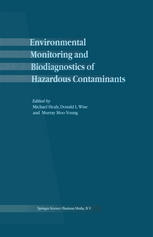

Most ebook files are in PDF format, so you can easily read them using various software such as Foxit Reader or directly on the Google Chrome browser.
Some ebook files are released by publishers in other formats such as .awz, .mobi, .epub, .fb2, etc. You may need to install specific software to read these formats on mobile/PC, such as Calibre.
Please read the tutorial at this link: https://ebookbell.com/faq
We offer FREE conversion to the popular formats you request; however, this may take some time. Therefore, right after payment, please email us, and we will try to provide the service as quickly as possible.
For some exceptional file formats or broken links (if any), please refrain from opening any disputes. Instead, email us first, and we will try to assist within a maximum of 6 hours.
EbookBell Team

5.0
58 reviewsIn recent years public awareness of the long term toxic affects heavy metal ions in waters and wastewaters has increased significantly. Environmental agencies have been imposing more and more stringent discharge limits on industries involved in processes using metal ions. Numerous industries produce aqueous effluents con taining metal ions and particularly copper and cadmium. Copper sulfate is used on a large scale in the electroplating industries. In addition, copper salts are used as fungicides, timber preservatives, insecticides, paint corrosion inhibitors and in dyestuffs. Cadmium is used in the manufacture of nickel-cadmium batteries, as a corrosion inhibitor and control rods in the nuclear industry. The European Com munity has listed cadmium as one of the most dangerous metal due to its toxicity, persistence and bioaccumulation in List 1 of its Directive 76/464/EEC. Therefore, it is important that methods for the removal of these metal ions are found and that the mechanism of removal is characterized and understood. A number of adsorb ents have been identified which are capable of removing copper (Panday et aI. , 1985; Ho et aI. , 1996; Low and Lee, 1987; Low et aI. , 1993; Quek et aI. , 1998) and cadmium (Battacharya and Venkobachar, 1984; Namasivayam and Ranganathan, 1995; Periasamy and Namasivayam, 1994) from aqueous solutions. Sorption kin etic models have been proposed for some systems.